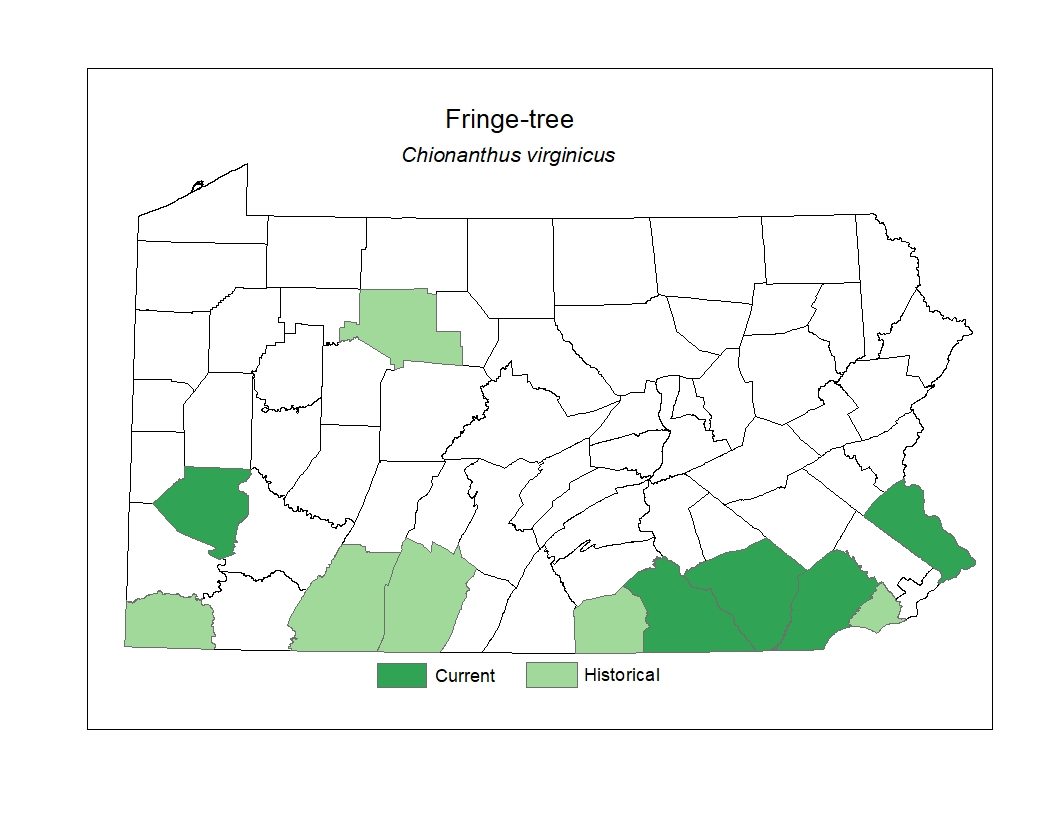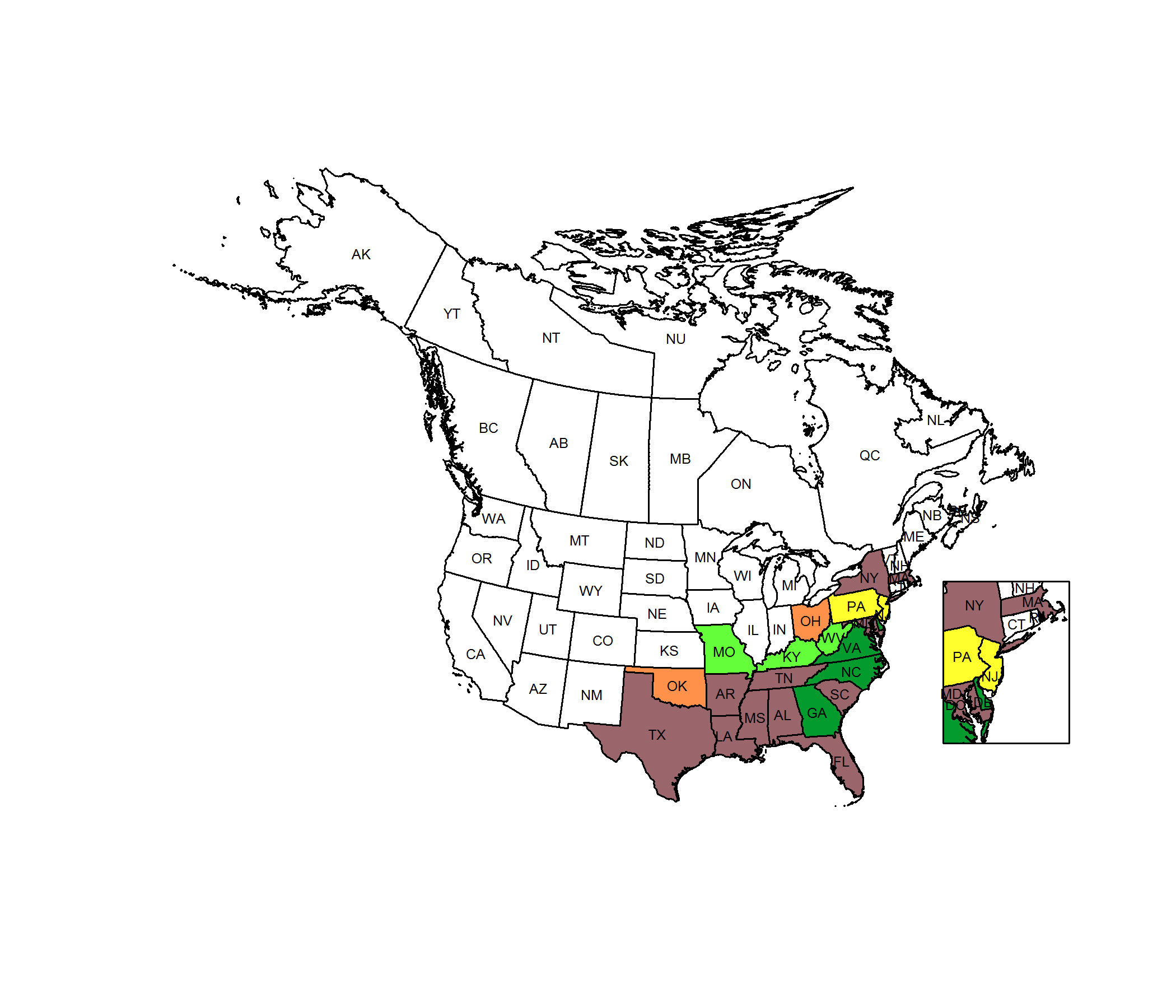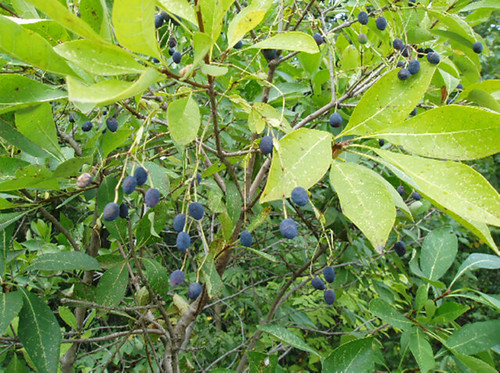 Species Factsheets
Species Factsheets
Chionanthus virginicus
Fringetree
State Status: N
PBS Status: Pennsylvania Threatened (PT)
Federal Status:
Global Rank: G5
![]() rank interpretation
rank interpretation
State Rank: S3
Did You Know?
The bark tincture was widely used by physicians in the late 19th century to relieve congestion of glandular organs.
Description
Fringetree (Chionanthus virginicus) is a deciduous shrub or small tree that can grow up to 10m tall, but is usually much smaller in Pennsylvania. The leaves are oppositely arranged, oval to elliptic in shape, usually 8-15cm long and 3-8cm wide, and have untoothed margins. The white flowers, which appear in May, are grouped in clusters. The flowers have four petal-like lobes, which are elongate, narrow, and have a fringed appearance. Flowers of this species are unisexual, with male and female flowers being produced on separate plants, so only female plants produce the dark blue, one-seeded fruit that matures in the fall.
Rank Justification
Vulnerable in the nation or state due to a restricted range, relatively few populations (often 80 or fewer), recent and widespread declines, or other factors making it vulnerable to extirpation.
PABS
The PA Biological Survey (PABS) considers fringetree to be a species of special concern, based on the relatively few occurrences that have been recently confirmed. It does not have a PA legal status, but has been assigned a suggested rarity status of Threatened by PABS. About twelve populations are currently known in the state.
Habitat
The species grows in moist woods and along streams, and is also cultivated as an ornamental.
Survey Dates
Flowers May; purple, black fruit in fall
Distribution
In Pennsylvania, it is near the northern border of its range, and has been documented historically from numerous southern counties.

Threats
This species may have declined in abundance from historical levels due to loss of its woodland habitat, invasive species, and excessive deer browsing.
Management
The viability of existing populations of fringetree and its habitat may be enhanced by creating buffers around fragmented forests and controlling invasive species.
Conservation Status Map


NatureServe. 2017. NatureServe Explorer: An online encyclopedia of life [web application]. Version 7.1. NatureServe, Arlington, Virginia. Available https://explorer.natureserve.org.
https://www.monticello.org/library/exhibits/lucymarks/gallery/vafringetree.html
- NatureServe. 2018. NatureServe Explorer: An online encyclopedia of life [web application]. Version 7.1. NatureServe, Arlington, Virginia. Available at https://www.natureserve.org/explorer
- Pennsylvania Natural Heritage Program. 2018.
- Rhoads, A.F. and W.M. Klein, Jr. 1993. The Vascular Flora of Pennsylvania. American Philosophical Society, Philadelphia, Pennsylvania. Rhoads, A.F. and T.A. Block.
- 2007. The Plants of Pennsylvania: An Illustrated Manual. 2nd edition. University of Pennsylvania Press, Philadelphia, Pennsylvania.







